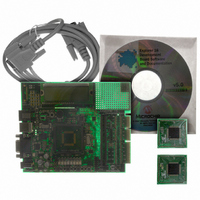DM240001 Microchip Technology, DM240001 Datasheet - Page 33

DM240001
Manufacturer Part Number
DM240001
Description
BOARD DEMO PIC24/DSPIC33/PIC32
Manufacturer
Microchip Technology
Series
Explorer 16 100-pinr
Type
MCUr
Specifications of DM240001
Contents
Explorer 16 Dev Board, PIC24FJ128GA010 and dsPIC33FJ256GP710 PIM Modules
Processor To Be Evaluated
PIC 24 and dsPIC33
Data Bus Width
16 bit
Interface Type
RS-232
Silicon Manufacturer
Microchip
Core Architecture
PIC, DsPIC
Core Sub-architecture
PIC24, DsPIC33
Silicon Core Number
PIC24F, DsPIC33F
Rohs Compliant
Yes
Lead Free Status / RoHS Status
Lead free / RoHS Compliant
For Use With/related Products
dsPIC30, dsPIC33, PIC32, PIC24FJ, PIC24HJ
For Use With
AC164127-5 - BOARD GRAPH LCD CNTLR PICTAILAC164127-3 - BOARD DAUGHTER GRAPHIC PICTAILAC164127 - BRD DAUGHT GRAPHIC PICTAIL PLUS
Lead Free Status / Rohs Status
Lead free / RoHS Compliant
Available stocks
Company
Part Number
Manufacturer
Quantity
Price
Company:
Part Number:
DM240001
Manufacturer:
MICROCHIP
Quantity:
12 000
Explorer 16 Development Board User’s Guide
DS51589A-page 29
FIGURE 4-1:
4.2.8
The Explorer 16 also has a footprint and layout support for the Optrex 128 x 64 dot-matrix
graphic LCD (part number F-51320GNB-LW-AB) and associated circuitry. This is the
same display used in Microchip’s MPLAB PM3 programmer.
4.2.9
Five push button switches provide the following functions:
• S1: Active-low MCLR switch to hard reset the processor
• S3: Active-low switch connected to RD6 (user-defined)
• S4: Active-low switch connected to RD13 (user-defined)
• S5: Active-low switch connected to RA7 (user-defined)
• S6: Active-low switch connected to RD7 (user-defined)
Switch S1 has a debounce capacitor, whereas S3 through S6 do not; this allows the
user to investigate debounce techniques. When Idle, the switches are pulled high
(+3.3V). When pressed, they are grounded.
4.2.10
A 10 kΩ potentiometer is connected through a series resistor to AN5. It can be adjusted
from V
4.2.11
Eight red LEDs (D2 through D9) are connected to PORTA of the PIM socket. The
PORTA pins are set high to light the LEDs. These LEDs may be disabled by removing
jumper JP2.
4.2.12
The installed microcontroller has two separate oscillator circuits connected.The main
oscillator uses an 8 MHz crystal (Y3) and functions as the controller’s primary oscillator.
A second circuit, using a 32.768 kHz (watch type) crystal (Y2), functions as the Timer1
oscillator and serves as the source for the RTCC and secondary oscillator.
The PIC18LF4550, at the heart of the USB subsystem, is independently clocked and
has its own 20 MHz crystal (Y1).
4.2.13
A 25LC256 256K (32K x 8) serial EEPROM (U5) is included for nonvolatile firmware
storage. It is also used to demonstrate SPI bus operation.
Cut Traces
Here
DD
to GND to provide an analog input to one of the controller’s A/D channels.
Graphic LCD
Switches
Analog Input (Potentiometer)
LEDs
Oscillator Options
Serial EEPROM
MODIFICATIONS TO R60-R67 FOR LCD CONFIGURATION
(SCALE ENHANCED FOR VISIBILITY)
© 2005 Microchip Technology Inc.
Bridges
Solder
Here
Add












